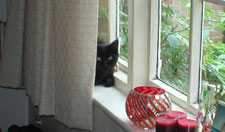Computer Science
Hexadecimal Numbers
In a digital computer, everything is represented using the binary number system. Binary patterns are not the easiest for human beings to interpret, mainly because even small numbers require a large number of place value columns. For example, using 16 bits, the pure binary numbers from 0 to 65535 can be represented. It is also worth noting that it takes less space to represent a number in hexadecimal on the screen. In this sense, hexadecimal can be said to be a shorthand for binary patterns.
Hexadecimal is base 16. Each place value is a power of 16 and allows the digits 0 - 9 and the letters A - F to be used to represent values from 0 - 15 in each column.
| 16 | Units |
|---|---|
| 0 | 0 |
Converting From Binary To Hex
Take the 8 bit binary number, 10111001. Chop it into 2 groups of 4 bits. Write the hexadecimal for the new binary values created.

To convert from denary to hex, first convert to binary and then follow the same procedure.
You can do the same in reverse. Converting from hex to denary is made a little easier if you do the binary conversion first using the method outlined.
Whichever methods you use, it makes sense to check your answer carefully. As long as you remember how to form the headings for the place value chart, you can always work from first principles.

